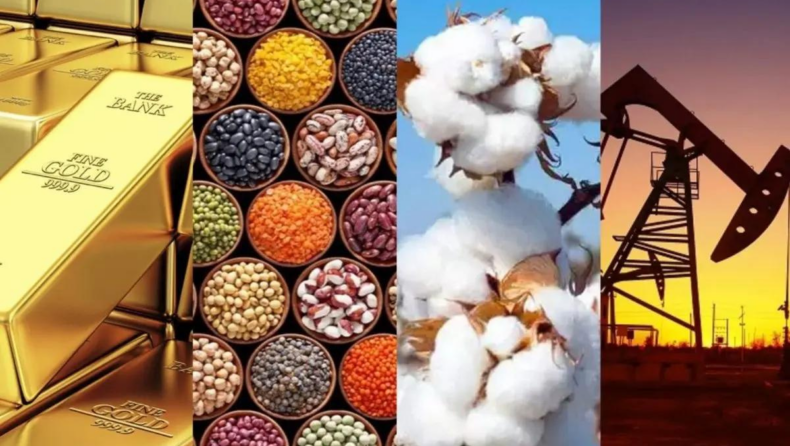Financial markets may examine economic projections to determine how long the Fed will continue to raise interest rates at the present speed and what effect it will have on economic growth.

Continuing with the latest trend, commodities witnessed mixed trade this week, but came under pressure as the positioning of the Fed’s decision next week, waning confidence in China and growing concerns about global economic growth.
This was a non-significant week as market players made no commitments ahead of the Fed’s decision, as gold remained in a tight range around $1,850 per ounce. Industrial metals came under pressure as optimism about the Chinese economy faded with renewed virus concerns and leading institutions lowered their global growth forecasts. Crude jumped to March highs on tightness concerns but struggled to build on its gains amid greater financial market volatility.
Among other asset classes, the US Dow Jones Industrial Average closed the week 4.6 percent, while Chinese equities tested two-month highs. The US dollar index witnessed mixed trade. Safe havens such as the Japanese yen, Swiss franc and US Treasury bonds fell for the second week in a row. Selling in traditional safe-havens, volatility in equity and commodity markets, and gains in the US dollar indicate that market players are avoiding assets for the safety of the US dollar.
The World Bank lowered the 2022 global growth rate from 4.1 percent to 2.9 percent and warned of the risks of inflation. The Organization for Economic Cooperation and Development (OECD) has reduced its 2022-year global growth forecast from 4.5 percent to 3 percent and expects inflation in OECD countries to reach 8.5 percent this year. The forecasts highlight the growing challenges posed by the Russian-Ukrainian war.
Big banks have taken a hawkish toll amid growing emphasis on inflation control. Strong concerns have risen sharply this week amidst major moves by major banks. The Reserve Bank of Australia and the Reserve Bank of India have announced significant lending rates beyond expectations highlighting their urgency to take action to control inflation.
The European Central Bank monetary policy meeting also showed a dramatic change in the situation but failed to find a major response. ECB officials’ comments and inflation data had led to expectations that the central bank could raise interest rates soon.
In line with expectations, the ECB has kept key borrowing rates unchanged and will end the bond buying process by July 1. The ECB has indicated a possible 0.25 percent increase in the July meeting and retains major action options if needed. The ECB has indicated that it is likely to consider a major rise in the September meeting if the concept of medium-term inflation continues or deteriorates.
Focus is now in the Fed’s decision next week. The Fed is expected to raise interest rates and maintain its stabilizing position. Market players can look at economic speculation to estimate whether the Fed will continue to raise interest rates at the current rate and whether it will contribute to economic growth.
Commodities have gained momentum in the past few days as China raises sanctions related to the virus, the government has taken further steps to finance the economy, economic data shows economic strength while the government reduces measures to reduce regulation. Concerns about China, however, resurfaced as an increase in virus cases forced Shanghai to shut down other parts for mass testing. China adheres to its zero COVID policy and if it continues to use borders to control the spread, it could contribute to the acceleration of economic recovery.
Read More: Asianatimes.com













